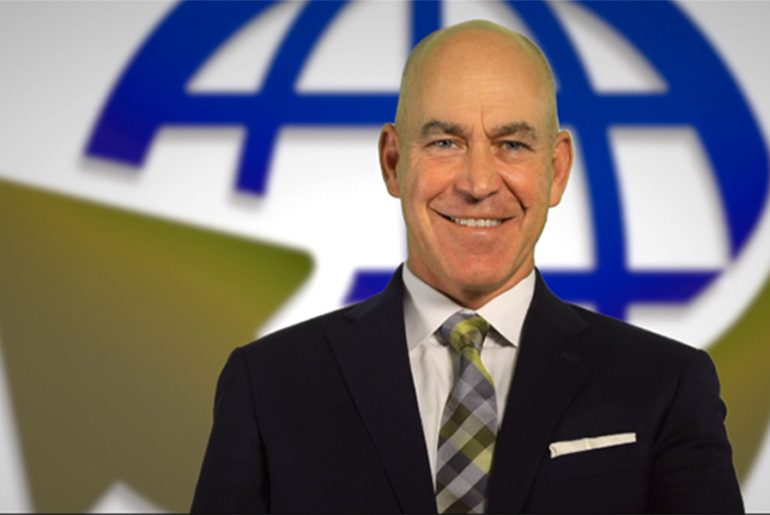The railroad industry has witnessed remarkable leaders throughout history, but few stories resonate as powerfully as that of Claude Edward Elkins Jr. As Executive Vice President and Chief Commercial Officer at Norfolk Southern, Elkins rose from brakeman to top leadership, creating a blueprint for effective leadership that transcends industry boundaries. His journey offers invaluable lessons for aspiring leaders across all sectors.
The Power of Ground-Up Experience
Claude Edward Elkins Jr.’s rise from a pioneering brakeman to a top executive at Norfolk Southern is a story of resilience, service, and vision. His career began with hands-on railroad work, giving him an intimate understanding of operations from the ground level. This foundational experience became the cornerstone of his leadership philosophy.
Leaders who understand their organization from the bottom up possess unique advantages. They can communicate effectively with frontline employees because they share common experiences. Elkins demonstrates that authentic leadership stems from genuine understanding of every aspect of the business, not just theoretical knowledge gained in boardrooms.
Building Credibility Through Experience
The credibility that comes from working various positions within an organization cannot be manufactured. When Elkins addresses operational challenges or makes strategic decisions, his team knows he speaks from experience. This credibility translates into trust, and trust becomes the foundation upon which effective leadership is built.
Frontline experience also provides leaders with practical problem-solving skills. Facing these obstacles, Elkins drew upon his determination and analytical mindset traits developed from his foundational railroad experience. The ability to think practically and find workable solutions often distinguishes exceptional leaders from average ones.
Customer-Centric Leadership Philosophy
Elkins’ leadership is characterized by a blend of operational expertise and customer-centric strategies. He stresses how important it is to know the ins and outs of how railroads work while also keeping up with the changing needs of customers. This approach demonstrates how successful leaders balance internal operations with external market demands.
Customer-centric leadership requires constant adaptation and evolution. Markets change, customer expectations shift, and successful leaders must guide their organizations through these transitions. Elkins exemplifies this adaptability by modernizing Norfolk Southern’s approach while maintaining operational excellence.
Strategic Vision Meets Practical Implementation
Under Elkins’ guidance, Norfolk Southern has strengthened client relationships, enhanced operational efficiency, and achieved consistent financial performance that ensures long-term organizational stability. His success illustrates how effective leaders must be both visionaries and practical implementers.
Strategic thinking without practical implementation remains merely academic exercise. Conversely, tactical execution without strategic vision leads to short-term thinking. Elkins demonstrates the importance of balancing both elements to achieve sustainable organizational success.
Resilience and Crisis Management
Managing workforce transitions as automation replaced certain manual jobs. Navigating crises, including derailments, supply chain bottlenecks, and economic downturns represents some of the challenges Elkins faced throughout his career. These experiences shaped his approach to crisis management and organizational resilience.
Effective leaders understand that challenges are inevitable. The key lies not in avoiding difficulties but in developing the skills and mindset to navigate them successfully. Elkins’ career demonstrates how leaders can use challenging experiences as opportunities for growth and learning.
Learning from Setbacks
Every industry faces disruptions, and the railroad sector is no exception. He continues to tackle challenges like supply chain disruptions, economic shifts, and regulatory pressures. Successful leaders like Elkins view these challenges as opportunities to strengthen their organizations and improve their capabilities.
The ability to remain calm under pressure and make sound decisions during difficult times separates great leaders from good ones. Elkins’ track record suggests that his early experiences dealing with operational challenges prepared him well for executive-level crisis management.
Innovation and Modernization
His leadership is defined by his dedication to sustainability, innovation, and operational excellence. Modern leaders must balance respect for tradition with the need for innovation and change. Elkins demonstrates this balance by leveraging his deep understanding of traditional railroad operations while driving modernization efforts.
| Innovation Area | Traditional Approach | Modern Solution | Leadership Impact |
| Operations | Manual processes | Automated systems | Increased efficiency |
| Customer Service | Phone-based communication | Digital platforms | Enhanced responsiveness |
| Safety Protocols | Paper documentation | Digital tracking | Improved compliance |
| Supply Chain | Regional focus | Network optimization | Cost reduction |
Innovation in established industries requires particular skill sets. Leaders must understand what aspects of traditional operations remain valuable while identifying areas where change can create competitive advantages. This requires both analytical thinking and intuitive understanding of market dynamics.
Embracing Technological Change
The railroad industry, like many traditional sectors, faces pressure to modernize and embrace new technologies. Leaders like Elkins show how to guide organizations through technological transitions while maintaining operational stability and employee confidence.
Successful modernization requires leaders who can communicate the benefits of change while addressing legitimate concerns about disruption. This balance demands both technical understanding and emotional intelligence.
Developing Others and Building Legacy
Elkins transformed into an inspirational figure for emerging professionals seeking advancement within the railroad industry. True leadership extends beyond personal achievement to include developing others and building organizational capability for the future.
| Leadership Quality | Application | Impact on Organization |
| Mentorship | Sharing operational knowledge with junior staff | Improved skill development across teams |
| Accessibility | Maintaining open communication at all levels | Enhanced employee engagement and trust |
| Example Setting | Demonstrating work ethic and professionalism | Cultural transformation and higher standards |
| Knowledge Transfer | Teaching both technical and strategic skills | Sustainable leadership pipeline |
Elkins’ story demonstrates how leaders can inspire others by example. His journey from brakeman to executive proves that advancement is possible through dedication, continuous learning, and consistent performance. This inspiration motivates others to pursue their own development and contributes to organizational strength.
Mentorship and Knowledge Transfer
Experienced leaders have responsibility to share their knowledge and guide the next generation. Elkins’ career path provides a roadmap for others while his current position allows him to influence company culture and development practices.
The most effective leaders understand that their ultimate success is measured not just by personal achievements but by the success of those they influence and develop along the way.
Conclusion
Claude Edward Elkins Jr.’s journey from frontline worker to Norfolk Southern executive demonstrates the value of ground-up experience, customer focus, and resilience. His leadership style grounded in operational knowledge and strategic vision continues earning respect within the transportation sector.
Elkins’ story proves that extraordinary leadership stems from consistently applying fundamental principles: understanding your business thoroughly, focusing on customer needs, and developing others. His success combines practical experience with strategic thinking, showing that effective leadership transcends industry boundaries and inspires the next generation.






